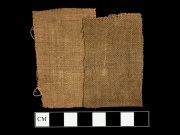Black walnut dye
Description
A yellow to black dye extracted from the leaves and nut shells of the black walnut, Juglans nigra, native to Europe and North America. Black walnut extract has been used as a dye since ancient times. The primary colorant is Juglone. Black walnuts shells form a Substantive dye giving a yellow to tan color. Darker colors are obtained with mordants. The shells are ground, soaked in water for two days, then boiled for 30 minutes. The dye has good lightfastness on Wool and Cotton.
Synonyms and Related Terms
Natural Brown 7; CI 75500; nuez de agallas (Esp.); noyer noir (Fr.); Schwarz Nussbaum (Deut.); colorante dal noce nero (It.); nogal negro (Esp.); notenbolster (Ned.); corante preto de noz (Port.); akhnot; walnut husks; black walnut hulls or leaves; brou-de-noix
Other Properties
Juglone is soluble in hot water, ethanol, ether. Juglone forms a red solution in sulfuric acid.
| CAS | 451-39-0 |
|---|
Additional Information
J.Hofenk-de Graaf, Natural Dyestuffs: Origin, Chemical Constitution, Identification, Central Research Laboratory for Objects of Art and Science, Amsterdam, September 1969.
Authority
- Palmy Weigle, Ancient Dyes for Modern Weavers, Watson-Guptill Publications, New York, 1974
- F. Crace-Calvert, Dyeing and Calico Printing, Palmer & Howe, London, 1876
